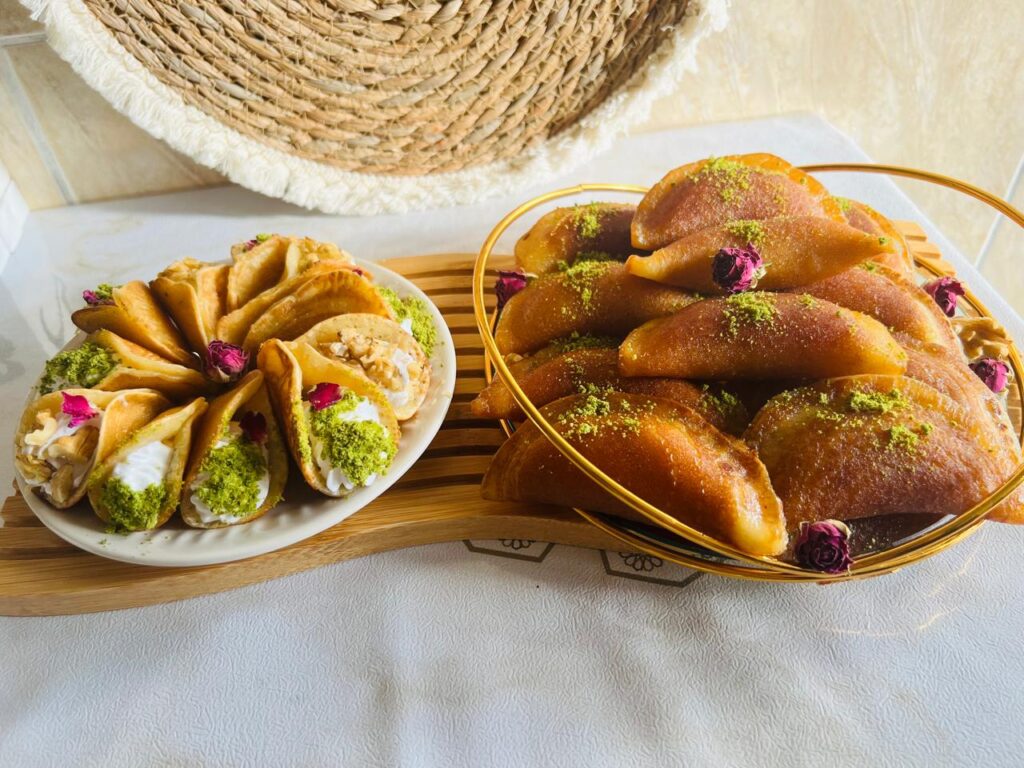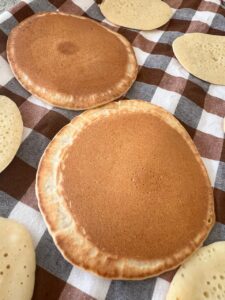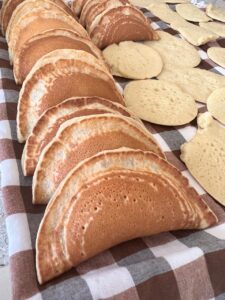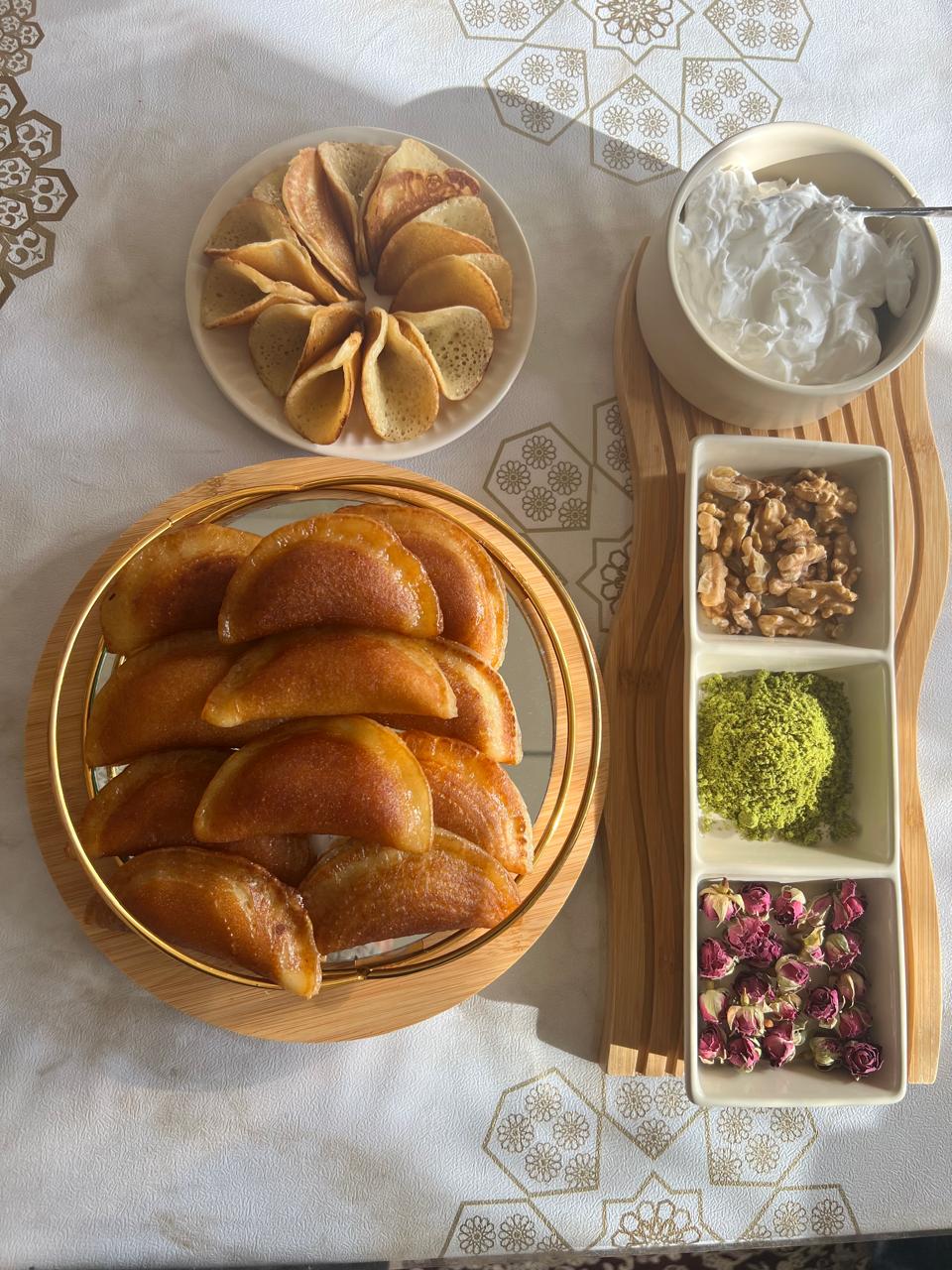Qatayef is a popular dessert during Ramadan. It is filled with almonds and walnuts, flavored with cinnamon, and soaked in syrup. People of all ages love it.
Qatayef is a Arabic dessert which people eat during Ramadan. It is a sweet dessert filled with cream or nuts. It looks like a pancake that has been folded. It is usually made from flour, baking powder, water, yeast, and sometimes sugar is put in. When you pour the mixture on a hot, round plate, it looks like pancakes but only one side is cooked. Then you fill it and fold it. There are many ways to make qatayef, such as the dough and the fillings used. Qatayef is made with cheese, nuts, almonds, or pistachios in the filling. Different countries have their own ways of serving qatayef. So, we can find Qatayef in different styles from Egypt, Syria, and Jordan.
Dough ingredients
- 2 cup Flour
- 1/4 cup Semolina
- 1 tbsp Sugar
- 1 tbsp Powdered milk
- 1 tsp Baking soda
- 1/4 tsp Yeast
- 2 cup Water
Syrup
- 2 cup Sugar
- 1 cup Water
- Half lemon (juce)
- 3 cardamom (seeds)
- 1/4 cup saffron (water)
Servings 6
- Amount Per Serving
- % Daily Value *
- Total Fat 5.2g8%
- Saturated Fat 0.6g3%
- Cholesterol 1mg1%
- Sodium 18mg1%
- Protein 1.4g3%
* Percent Daily Values are based on a 2,000 calorie diet. Your daily value may be higher or lower depending on your calorie needs.
Note
In summary, Qatayef represents the Middle Eastern food traditions and brings people together to celebrate. Its flexibility means you can make it in many different ways and serve it for lots of different events. People love it for special meals and as a treat for every day. Qatayef is a tasty treat that brings people together and makes them happy. It can be filled with traditional or new flavors. When you eat Qatayef, enjoy its tasty flavors and think about the cultural meaning and happiness it brings to the meal.
Did you make this recipe?
Whether you're a kitchen novice or a seasoned chef. You can make it, Perfect for chilly nights or quick lunches, it's a simple yet satisfying treat for your taste buds. Check out more posts for delicious inspiration! Click Here!!

 Combine the semolina, sugar, baking powder, Powdered milk, Yeast, flour, and water in a mixer and blend until it forms a soft, liquid dough resembling pancake batter.
Combine the semolina, sugar, baking powder, Powdered milk, Yeast, flour, and water in a mixer and blend until it forms a soft, liquid dough resembling pancake batter.






